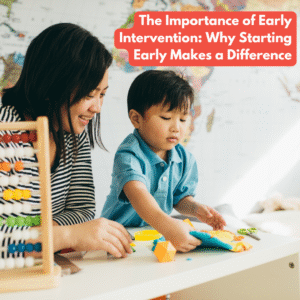Tantrums are a normal part of toddlerhood — but that doesn’t make them any easier to handle. Whether it’s a meltdown in the supermarket or tears over bedtime, every parent has been there. Understanding why tantrums happen (and how to respond calmly) can make all the difference.
Why Toddlers Have Tantrums
Tantrums are your child’s way of expressing big emotions they don’t yet have the words for.
Common triggers include:
- Feeling hungry, tired, or overwhelmed
- Struggling to communicate wants and needs
- Transitions (like leaving the playground or turning off the TV)
- Testing limits as part of growing independence
Remember — tantrums aren’t “bad behavior.” They’re emotional overload moments where your child needs help calming down.
1. Stay Calm — Your Reaction Sets the Tone
It’s easier said than done, but your calm helps your child feel safe.
Take a deep breath before responding, and try not to yell or give in out of frustration.
Instead, speak softly and keep your tone steady:
“I can see you’re upset. Let’s take a break and breathe together.”
2. Name the Emotion
Helping toddlers identify feelings builds emotional intelligence.
Try saying things like:
“You’re sad because playtime is over.”
“You’re mad because you wanted the blue cup.”
When children feel understood, they learn that emotions are okay — and temporary.
3. Create Calm-Down Spaces
Designate a cozy corner at home with soft pillows, books, or sensory tools where your child can unwind.
This isn’t a punishment area — it’s a safe zone for self-regulation.
Over time, your child will learn to go there independently when they feel overwhelmed.
4. Use Distraction and Redirection
Younger toddlers respond well to gentle redirection:
“Let’s go see what’s outside!”
“Can you help me build this tower?”
Redirecting attention helps shift their emotional state before frustration escalates.
5. Be Consistent with Boundaries
Consistency builds trust. If you say “no snacks before dinner,” stick to it — even when tears flow.
Children feel secure when they know what to expect.
A consistent routine also reduces tantrum triggers related to uncertainty.
6. Prepare for Transitions
Give short warnings before changes happen:
“We’ll clean up in five minutes.”
“One more slide, then we go home.”
This helps children mentally prepare and reduces resistance to transitions.
7. Reinforce Positive Behavior
Catch your child being good and acknowledge it:
“I love how you waited for your turn!”
Positive attention motivates children far more than punishment.
When to Seek Support
If tantrums are frequent, intense, or accompanied by developmental delays (e.g., limited speech, difficulty calming even after comfort), it may help to consult an Occupational Therapist (OT) or child development specialist.
At KidsFirst, our team works with families to build emotional regulation, communication, and coping skills — turning those tough moments into opportunities for growth.
Tantrums are tough — but you don’t have to face them alone.
👉 Learn how our Early Intervention and Therapy Programs can support your child’s emotional and behavioral development.
Visit kidsfirst.co or contact us today.





































